Abstract
Antimicrobial activity of the following four new N-chloramine compounds was evaluated: two chlorinated simple amino acids, a chlorinated half-ester of succinic acid, and a chlorinated half-ester of glutaric acid. For comparison, the known bactericidal agents 3-chloro-4,4-dimethyl-2-oxazolidinone and chlorhexidine were evaluated by the same procedure. The contact germicidal efficiency screen was used to examine the in vitro bactericidal activity of all six compounds in the absence and presence of 5% horse serum or 5% Triton X-100. The four new compounds were found to have greater germicidal activity than the other compounds tested and to exhibit low toxicity and skin irritation values. The in vivo bactericidal activity was evaluated in two studies. In the occlusion test, three of the four new compounds plus chlorhexidine diacetate were tested. The N-chloramines were significantly superior to chlorhexidine in preventing the expansion of the normal flora under occlusion. In the scrub test, a gloved-hand wash method was used to compare the antimicrobial effect of a 1% solution of the chlorinated half-ester of succinic acid in triacetin with that of a commercial germicidal hand wash containing 4% chlorhexidine gluconate. The two preparations exhibited essentially the same hand-degerming activity.
Full text
PDF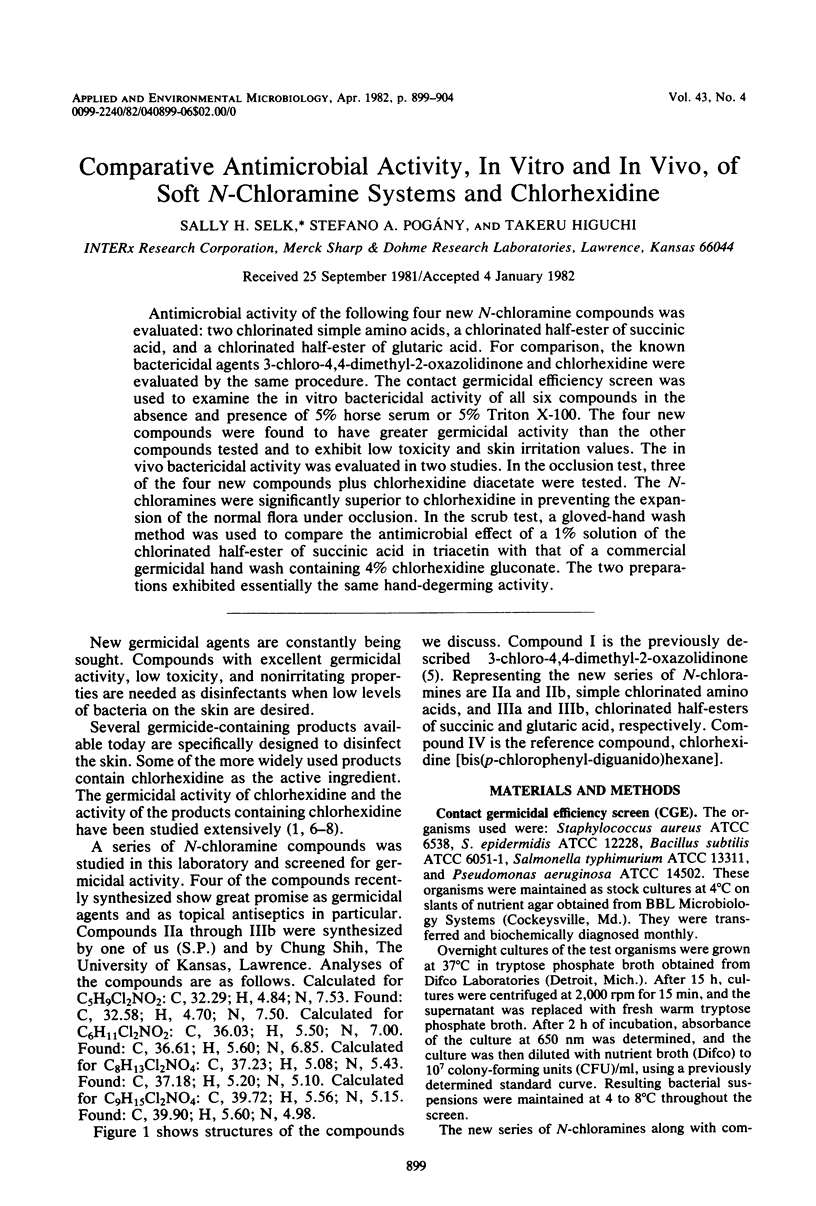
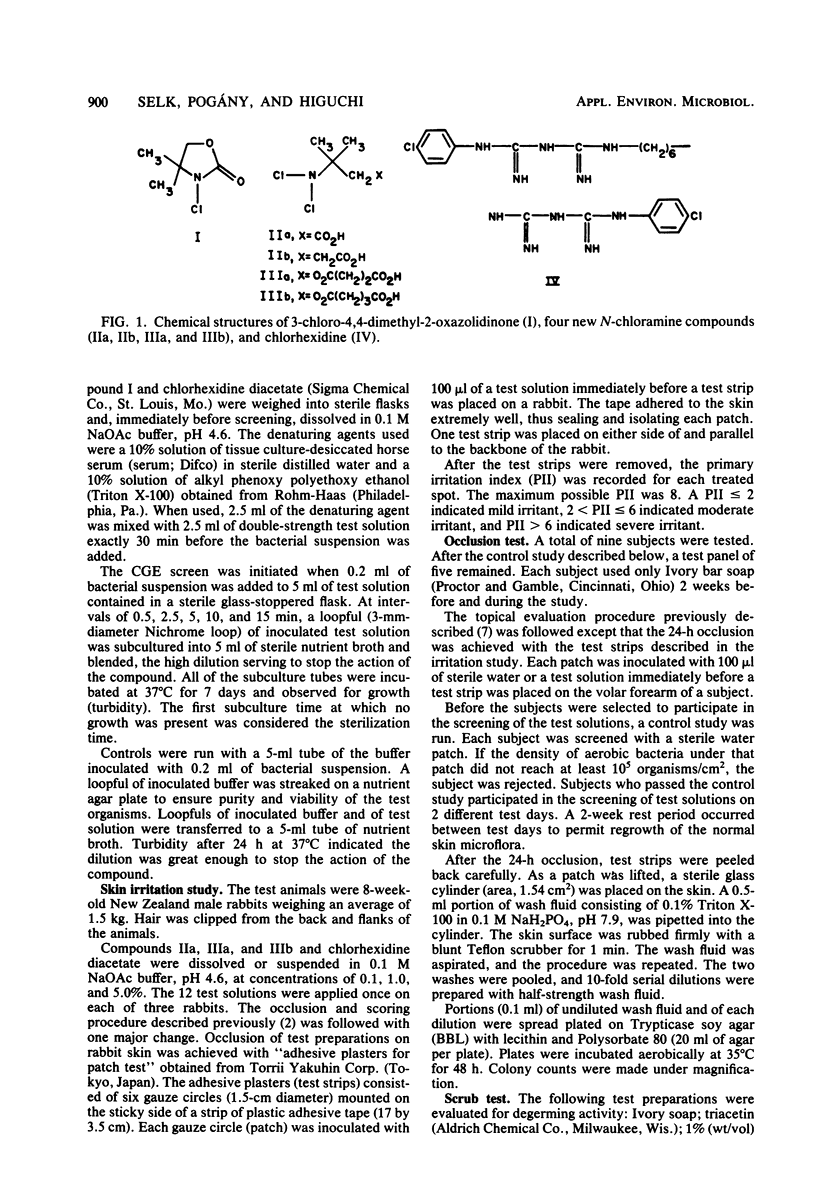
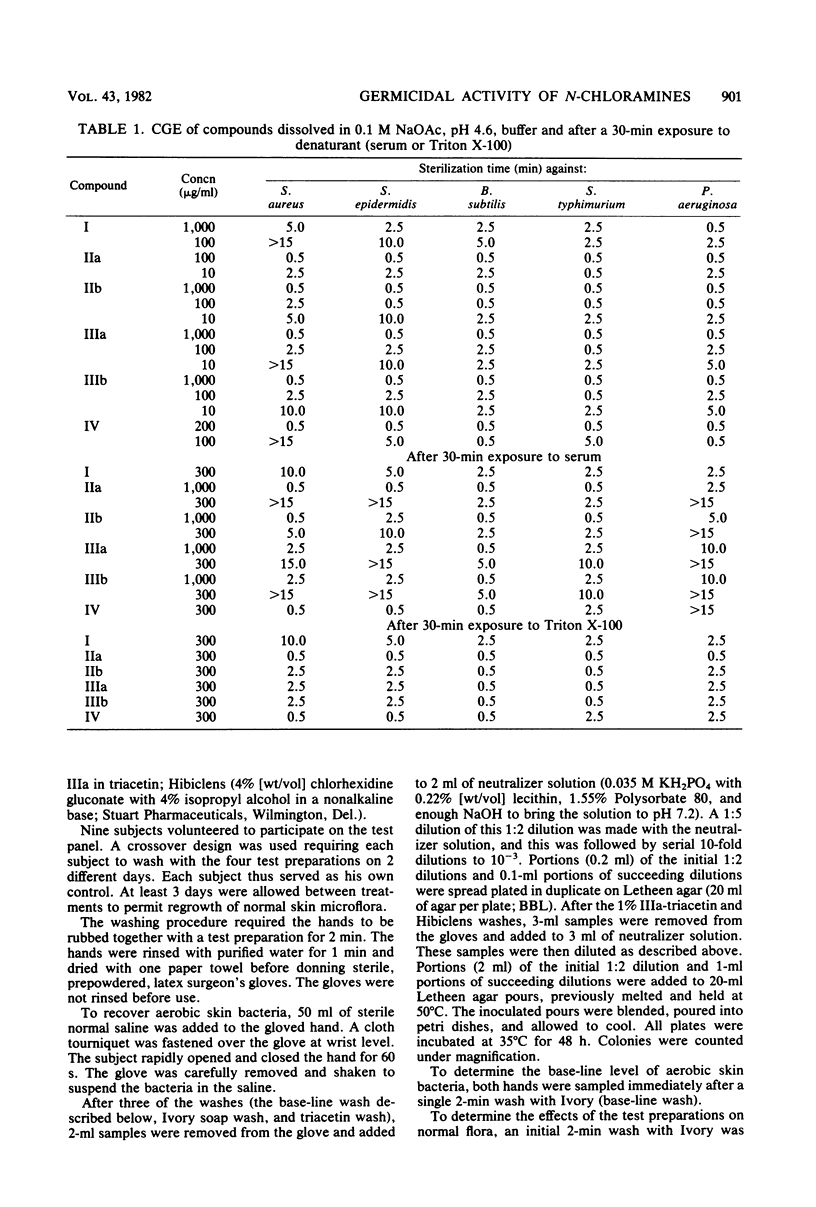
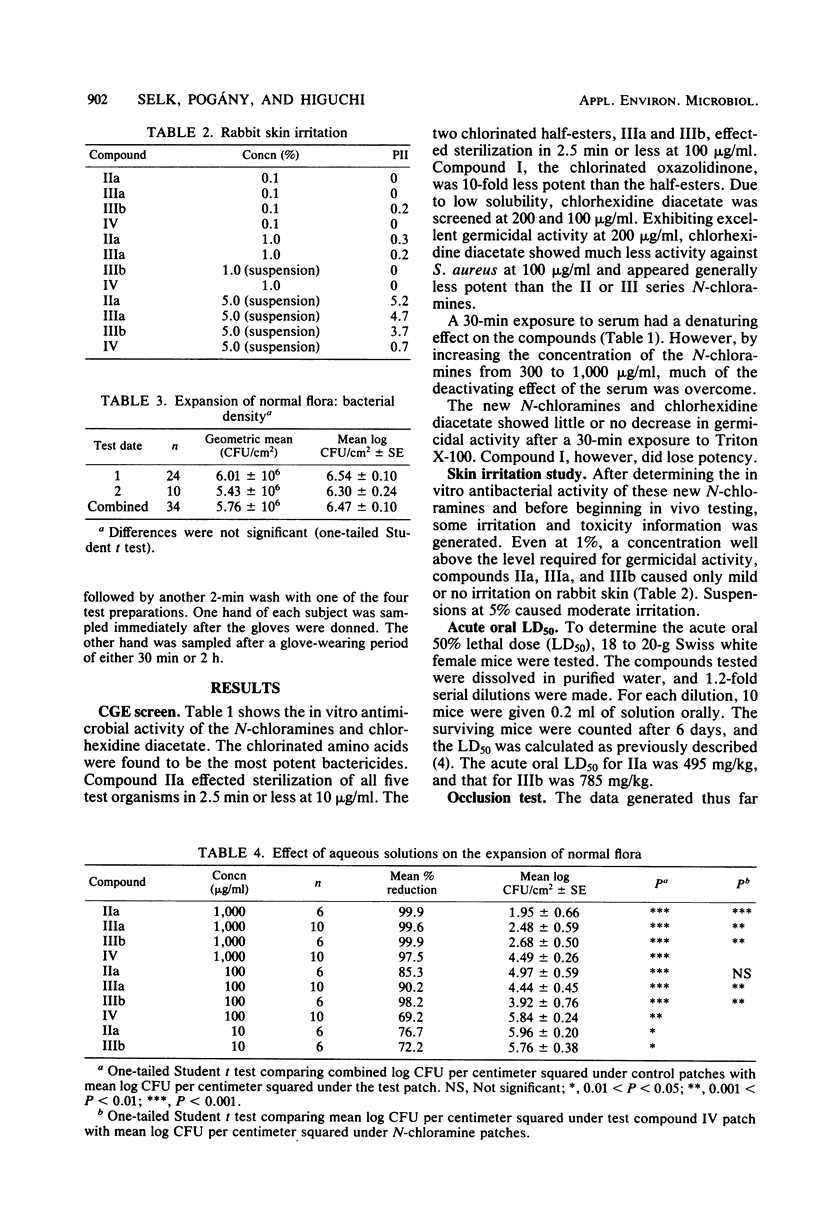
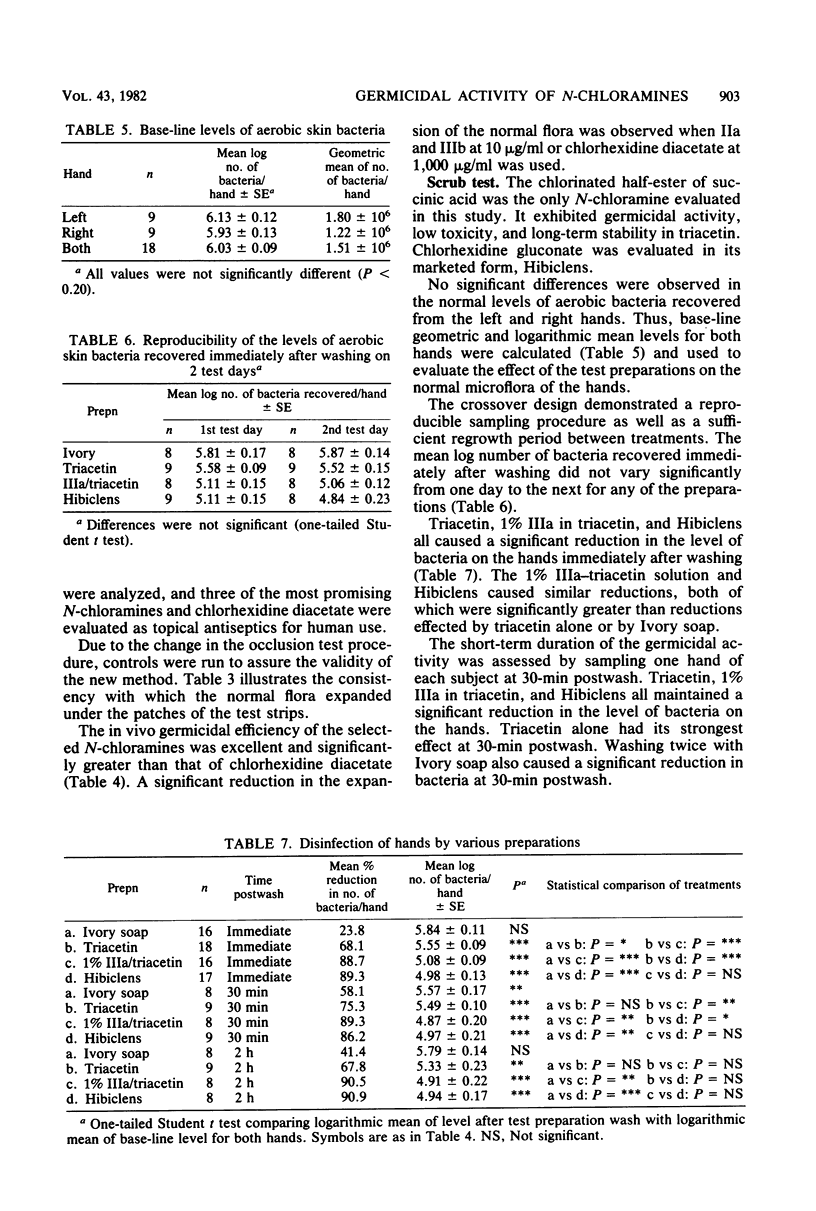
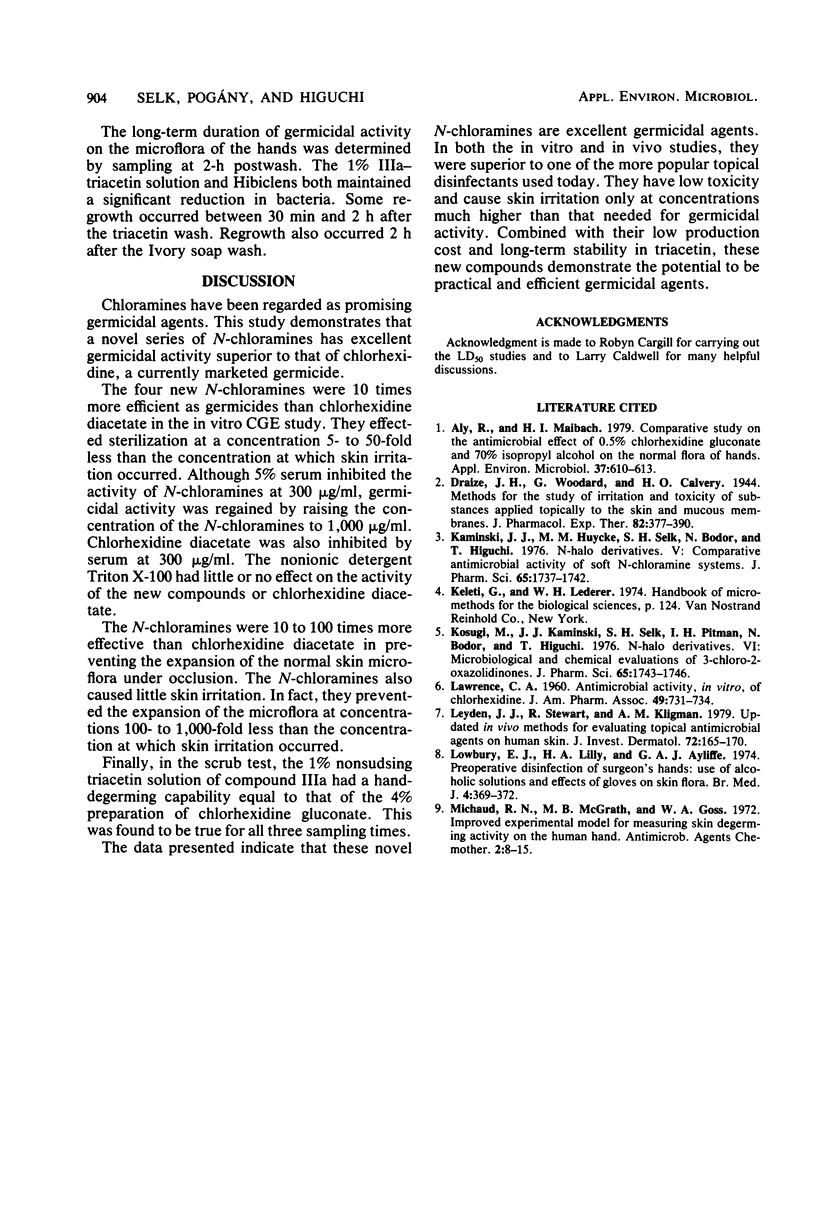
Selected References
These references are in PubMed. This may not be the complete list of references from this article.
- Aly R., Maibach H. I. Comparative study on the antimicrobial effect of 0.5% chlorhexidine gluconate and 70% isopropyl alcohol on the normal flora of hands. Appl Environ Microbiol. 1979 Mar;37(3):610–613. doi: 10.1128/aem.37.3.610-613.1979. [DOI] [PMC free article] [PubMed] [Google Scholar]
- Kaminski J. J., Huycke M. M., Selk S. H., Bodor N., Higuchi T. N-Halo derivatives V: Comparative antimicrobial activity of soft N-chloramine systems. J Pharm Sci. 1976 Dec;65(12):1737–1742. doi: 10.1002/jps.2600651211. [DOI] [PubMed] [Google Scholar]
- Kosugi M., Kaminski J. J., Selk S. H., Pitman I. H., Bodor N., Higuchi T. N-Halo derivatives VI: Microbiological and chemical evaluations of 3-chloro-2-oxazolidinones. J Pharm Sci. 1976 Dec;65(12):1743–1746. doi: 10.1002/jps.2600651212. [DOI] [PubMed] [Google Scholar]
- Leyden J. J., Stewart R., Kligman A. M. Updated in vivo methods for evaluating topical antimicrobial agents on human skin. J Invest Dermatol. 1979 Apr;72(4):165–170. doi: 10.1111/1523-1747.ep12676347. [DOI] [PubMed] [Google Scholar]
- Lowbury E. J., Lilly H. A., Ayliffe G. A. Preoperative disinfection of surgeons' hands: use of alcoholic solutions and effects of gloves on skin flora. Br Med J. 1974 Nov 16;4(5941):369–372. doi: 10.1136/bmj.4.5941.369. [DOI] [PMC free article] [PubMed] [Google Scholar]
- Michaud R. N., McGrath M. B., Goss W. A. Improved experimental model for measuring skin degerming activity on the human hand. Antimicrob Agents Chemother. 1972 Jul;2(1):8–15. doi: 10.1128/aac.2.1.8. [DOI] [PMC free article] [PubMed] [Google Scholar]


